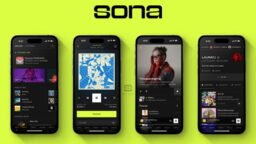Music streaming services switching to a user-centric payment model would have a “significant” impact on the payments artists receive, with one in five artists doubling their earnings, while four in 10 could see significant drops.
That’s according to the results of a new study from Germany-headquartered music services firm Pro Musik.
The study found that 29.3% of artists would see an increase in income of 40% or more, when compared to the “pro-rata” model of payments currently favored by most streaming platforms.
Additionally, 19% of artists would see an income increase of 100% or more, the study found.
However, on the other side of the coin, 38.8% of artists would see a decrease in income of 40% or more, with 11% of artists losing 80% to 100% of their income from streaming.
“While previous studies concluded that [a user-centric payment model] would only lead to marginal changes in revenue distribution, our analysis demonstrates that the overall impact could in fact be significant,” the study’s authors conclude.

It surveyed 50,300 artist profiles on SoundCloud, an early backer of the user-centric payment model – or, as the streaming service calls it, “Fan-Powered Royalties.” It tracked streams and payments made between May and October of 2022. The streaming behavior of 1.5 million SoundCloud users was captured in the data.
The study looked at SoundCloud users in 18 countries, with Germany, the United Kingdom, France, Canada and Australia being the largest markets.
Under the pro-rata model used by Spotify and most other music streaming platforms, the money raised from subscribers to pay artists is pooled together, and each artist receives a share that is proportional to the total amount of streams they received.
Under a user-centric model, the calculation is done at the level of the individual subscriber. Each user’s streams are shared with artists proportionally to the artists they streamed during a given period of time.
The Pro Musik study found the “gainers” under the user-centric model – that is, the 29% who would see their income rise 40% or more – had a relatively lower stream count. Although they were 29% of all artists, they received 18.8% of all streams.
However, they also had a broader reach, with 25.4% of all listeners streaming their music.
“So while the Gainers are 19% “smaller” in terms of streams, they are actually on average 40% ‘bigger’ when measured in users reached,” the study said.
The study found that there were three principal factors that would result in an artist receiving more money under the user-centric model than under the pro-rata model:
- 1: An artist’s relative user reach. The more users an artist reaches, relative to their total number of streams, the more they are favored under the user-centric model.
- 2: An artist’s average user commitment. The higher the share of a user’s total listening time is devoted to a particular artist, the more that artist is favored under the user-centric model.
- 3: An artist’s relative average user spend. The more money an artist’s listeners spend on their subscription (for instance, by purchasing higher-tier services) the more an artist is favored by the user-centric model.
The Pro Musik study’s results contrast with earlier studies, which found a less pronounced impact on artists’ earnings from a switch to the user-centric model.
For instance, a 2021 study from the France-based Centre national de la musique, which looked at artists and listeners on streaming services Deezer and Spotify, found that the top 10 most listened-to artists on Deezer would receive 17.2% lower royalty payments under the user-centric model, compared to the pro-rata model, while the Top 10 artists on Spotify would receive 12.5% less under user-centric payments.
(Results like this may be why the major recording companies appear to be reluctant to support a user-centric approach to payments, and have increasingly come out in favor of the “artist-centric” model, which would reward artists according to the “added value” they bring to a streaming platform. For instance, an artist that typically starts users’ listening sessions, or is able to bring in new sign-ups to the platform, would receive higher payments per stream under the artist-centric model.)
“While previous studies concluded that [a user-centric payment model] would only lead to marginal changes in revenue distribution, our analysis demonstrates that the overall impact could in fact be significant.”
Pro Musik
Meanwhile, a 2022 study from entertainment and media research firm MiDIA, which looked at 118,000 artists participating in SoundCloud’s Fan-Powered Royalties program, found that 56% of artists would earn more under the user-centric model than under pro-rata.
By contrast, Pro Musik’s study found that only 41.5% of artists, on average, would earn some amount more under the user-centric model than under the pro-rata model.
However, the MiDIA study had similar results to the Pro Musik study in terms of the dynamic at play, in that the user-centric model “rewards quality of fans, not quantity of streams.”
Because of this, the user-centric model is good at “catching out inauthentic bots and listeners who are paid to repeatedly stream,” the MiDIA study said. “There is less incentive to ‘game the system’, thus facilitating authentic fandom.”Music Business Worldwide




